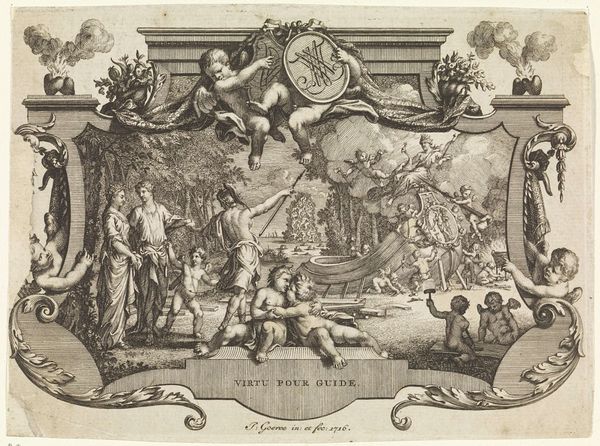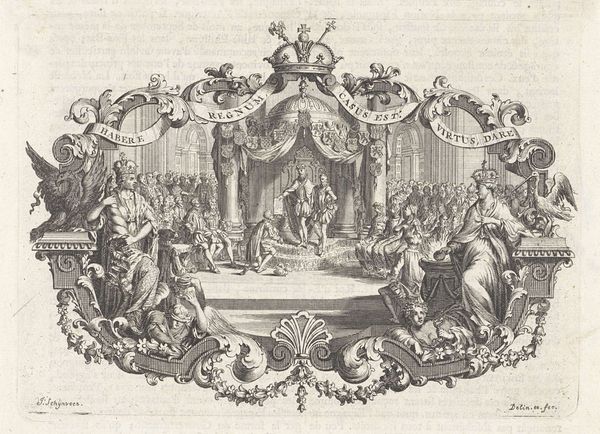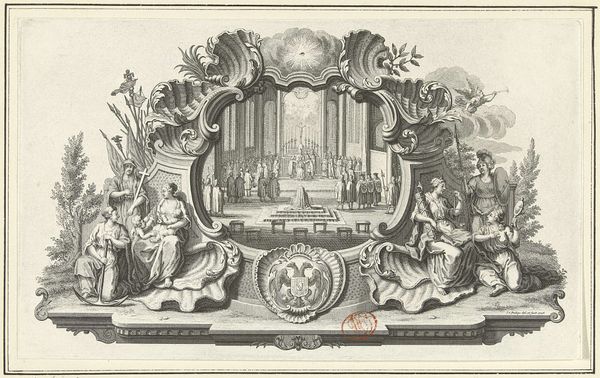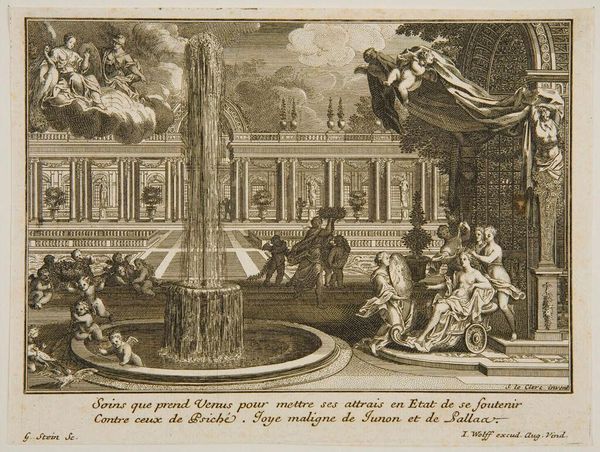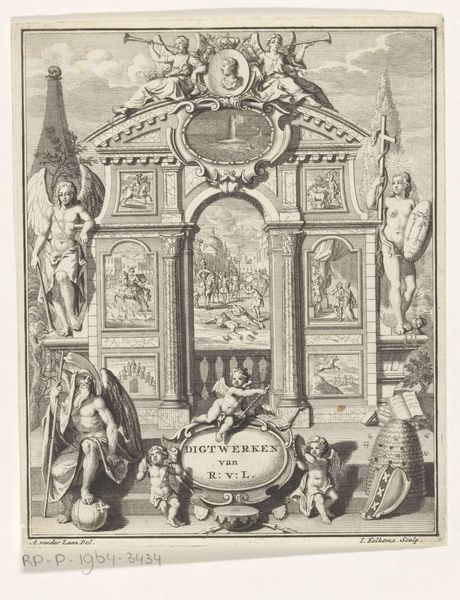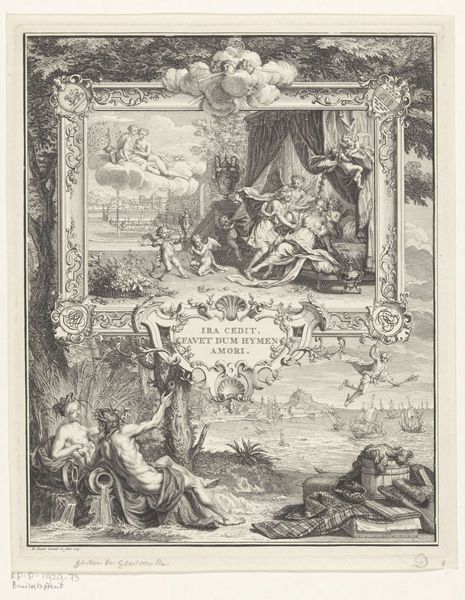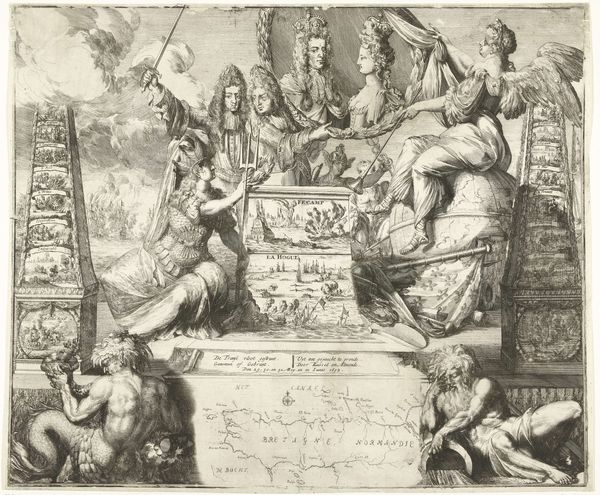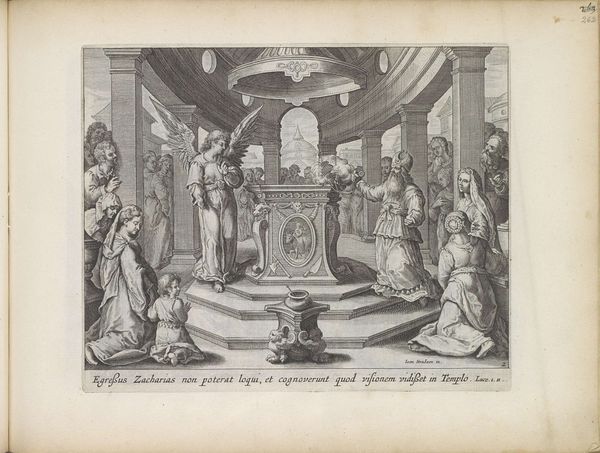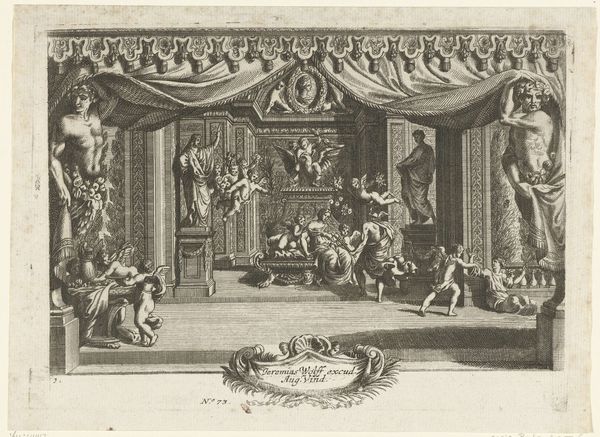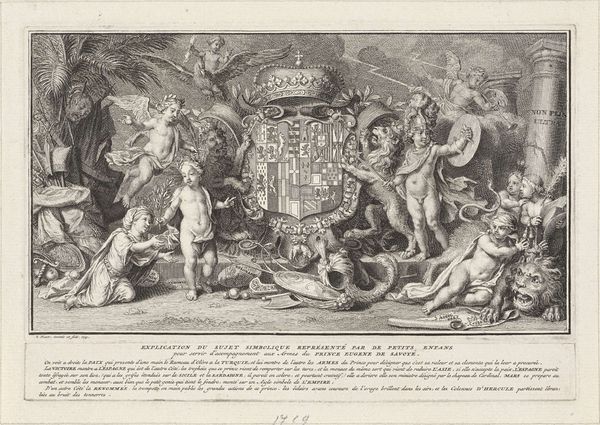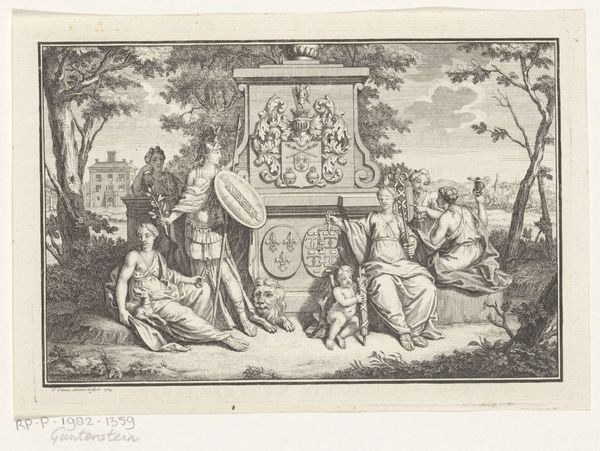
Mannen en vrouwen kijken in de geopende graftombes van historische personen 1655
0:00
0:00
engraving
#
allegory
#
baroque
#
old engraving style
#
landscape
#
vanitas
#
momento-mori
#
history-painting
#
engraving
Dimensions: height 213 mm, width 323 mm
Copyright: Rijks Museum: Open Domain
Editor: This is "Mannen en vrouwen kijken in de geopende graftombes van historische personen," or "Men and women looking into the opened tombs of historical figures," an engraving by Cornelis van Dalen I, created in 1655. It has a sort of theatrical mood, like a stage play about death. There are a lot of figures crammed into the space, but somehow it still feels very balanced. What do you see in this piece? Curator: Focusing on the internal structure, we find the composition articulated along a clear horizontal axis defined by the tombs themselves. Note how each tomb is rendered, the varying degrees of detail modulating across the pictorial plane, acting as discrete visual anchors. Are you sensing a similar organization? Editor: Yes, definitely. The eye does jump from tomb to tomb. It’s interesting how the artist gives each one its own kind of weight through detail and darkness. Curator: Precisely. Consider further how van Dalen has managed light. The scene is illuminated inconsistently, with certain figures and skeletal remains highlighted for dramatic effect, yet with no apparent light source. The use of contrasting tones directs the eye and enlivens the composition, creating depth and atmosphere within the fairly rigid structure. Editor: I can see that now. The contrast between light and dark does create drama. But also how that dome like the dark space, on the top center makes the image looks divided in a very theatrical form. Curator: An insightful observation. The upper register serves less to complement than to establish a celestial and divine space, set apart. I also find the integration of text intriguing—little banners of pronouncements. The engraving teases the eye to reconcile word and image. How do you interpret the relationship of textual and representational elements here? Editor: I think it adds another layer. They seem like labels almost, that invite us to think about who is lying inside. That is smart way to see those old bodies, because they don't speak to us anymore! I’m leaving with new eyes toward this piece. I think I can see the importance of details in the dark-light composition in Baroque better. Curator: Agreed. The formal techniques are remarkable, creating powerful tensions that transcend its apparent morbidity.
Comments
No comments
Be the first to comment and join the conversation on the ultimate creative platform.

